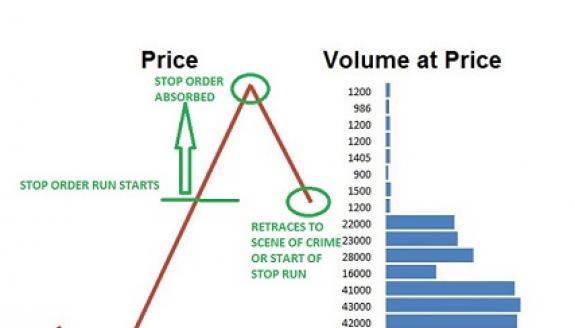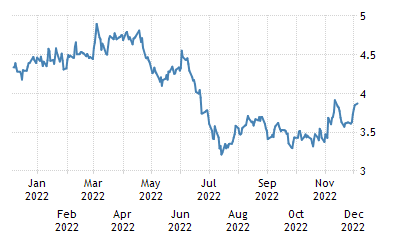
Are you searching for stocks with high payout ratios, yields, and dividend yields This is the place for you! We will show you how to evaluate the key factors when buying stock. This includes sustainability, ex-date and payout ratio. This information will help to make smart investment decisions in Nasdaq stocks. Here are some more tips to make your decision easier. This article will help you determine whether a stock would be a good investment for your portfolio.
High dividend yields
It may seem tempting to invest in high dividend yielding Nasdaq stocks. However, there is a real risk in chasing high yielding dividends. T. Rowe Price and Rio Tinto are just a few examples of companies that see their dividend yields rise as the stock falls. Investors may lose money if they chase high dividend yields. But if you wait until the dividend yield of a stock drops, you may be rewarded by a huge payout.

High payout rates
Investors who are looking for high dividend yields must pay close attention to the payout ratio. Companies with a payout ratio of more than 50% tend to be better investments than those with a payout ratio less than 50 percent. Their dividend payments will remain stable, even if earnings drop. One example is Citigroup (C), which trades for less than 6.5 times earnings or 60% of its tangible book value. The company's yield is 4.3% and its earnings are sufficient to cover its dividend payments. Analysts believe that earnings growth in the next year will be higher, meaning that investors will get a better return on their long-term investment at Citigroup (C).
Ex-date
You must be aware of the ex-date for dividends if you wish to invest in stocks of Nasdaq companies. An ex-date means the day before the dividend record. You can buy security on Tuesday, and the stock will settle on Thursday. Assuming you are a shareholder at record on Thursday, you will be paid a dividend.
Sustainable dividends
Dividend sustainability strategies must consider the company's ability to pay their current dividends without incurring any additional debt or reducing their capital. Payout ratios should not exceed one. Dividend sustainability strategies that pay less in dividends than what they earn are unlikely to be sustainable. Companies who pay more in dividends then they earn might not be able or able to cover their debt obligations. It is a good idea to consider dividend sustainability strategies for companies that increase the dividends they pay. They should have a history of dividend increases and have a low payout ratio.

Investing in dividend growth stocks
It is important to understand why dividends matter when investing in stocks. Dividends make up a significant portion of a portfolio and are an important part of the stock's overall returns. Dividend growth stocks are a great way to protect your portfolio against market volatility, in addition to providing steady income. ETFs cost around 0.1%, and there is no commission.
FAQ
Stock marketable security or not?
Stock can be used to invest in company shares. This is done via a brokerage firm where you purchase stocks and bonds.
Direct investments in stocks and mutual funds are also possible. There are over 50,000 mutual funds options.
The key difference between these methods is how you make money. With direct investment, you earn income from dividends paid by the company, while with stock trading, you actually trade stocks or bonds in order to profit.
In both cases, ownership is purchased in a corporation or company. However, when you own a piece of a company, you become a shareholder and receive dividends based on how much the company earns.
Stock trading gives you the option to either short-sell (borrow a stock) and hope it drops below your cost or go long-term by holding onto the shares, hoping that their value increases.
There are three types to stock trades: calls, puts, and exchange traded funds. Call and put options give you the right to buy or sell a particular stock at a set price within a specified time period. ETFs, which track a collection of stocks, are very similar to mutual funds.
Stock trading is a popular way for investors to be involved in the growth of their company without having daily operations.
Stock trading is not easy. It requires careful planning and research. But it can yield great returns. This career path requires you to understand the basics of finance, accounting and economics.
What is a Stock Exchange exactly?
Companies sell shares of their company on a stock market. This allows investors and others to buy shares in the company. The market determines the price of a share. The market usually determines the price of the share based on what people will pay for it.
Companies can also get money from investors via the stock exchange. Investors invest in companies to support their growth. Investors purchase shares in the company. Companies use their funds to fund projects and expand their business.
Stock exchanges can offer many types of shares. Some are called ordinary shares. These are the most popular type of shares. These are the most common type of shares. They can be purchased and sold on an open market. Prices of shares are determined based on supply and demande.
Preferred shares and debt security are two other types of shares. When dividends become due, preferred shares will be given preference over other shares. These bonds are issued by the company and must be repaid.
Why is a stock called security?
Security is an investment instrument that's value depends on another company. It may be issued by a corporation (e.g., shares), government (e.g., bonds), or other entity (e.g., preferred stocks). The issuer can promise to pay dividends or repay creditors any debts owed, and to return capital to investors in the event that the underlying assets lose value.
Statistics
- For instance, an individual or entity that owns 100,000 shares of a company with one million outstanding shares would have a 10% ownership stake. (investopedia.com)
- Individuals with very limited financial experience are either terrified by horror stories of average investors losing 50% of their portfolio value or are beguiled by "hot tips" that bear the promise of huge rewards but seldom pay off. (investopedia.com)
- Our focus on Main Street investors reflects the fact that American households own $38 trillion worth of equities, more than 59 percent of the U.S. equity market either directly or indirectly through mutual funds, retirement accounts, and other investments. (sec.gov)
- US resident who opens a new IBKR Pro individual or joint account receives a 0.25% rate reduction on margin loans. (nerdwallet.com)
External Links
How To
How to make a trading program
A trading plan helps you manage your money effectively. This allows you to see how much money you have and what your goals might be.
Before you create a trading program, consider your goals. It may be to earn more, save money, or reduce your spending. If you're saving money, you might decide to invest in shares or bonds. You can save interest by buying a house or opening a savings account. And if you want to spend less, perhaps you'd like to go on holiday or buy yourself something nice.
Once you have a clear idea of what you want with your money, it's time to determine how much you need to start. This will depend on where you live and if you have any loans or debts. Also, consider how much money you make each month (or week). The amount you take home after tax is called your income.
Next, you'll need to save enough money to cover your expenses. These expenses include rent, food, travel, bills and any other costs you may have to pay. Your total monthly expenses will include all of these.
You will need to calculate how much money you have left at the end each month. This is your net income.
Now you've got everything you need to work out how to use your money most efficiently.
To get started, you can download one on the internet. You could also ask someone who is familiar with investing to guide you in building one.
Here's an example of a simple Excel spreadsheet that you can open in Microsoft Excel.
This shows all your income and spending so far. This includes your current bank balance, as well an investment portfolio.
And here's a second example. This was designed by a financial professional.
It will help you calculate how much risk you can afford.
Don't attempt to predict the past. Instead, put your focus on the present and how you can use it wisely.